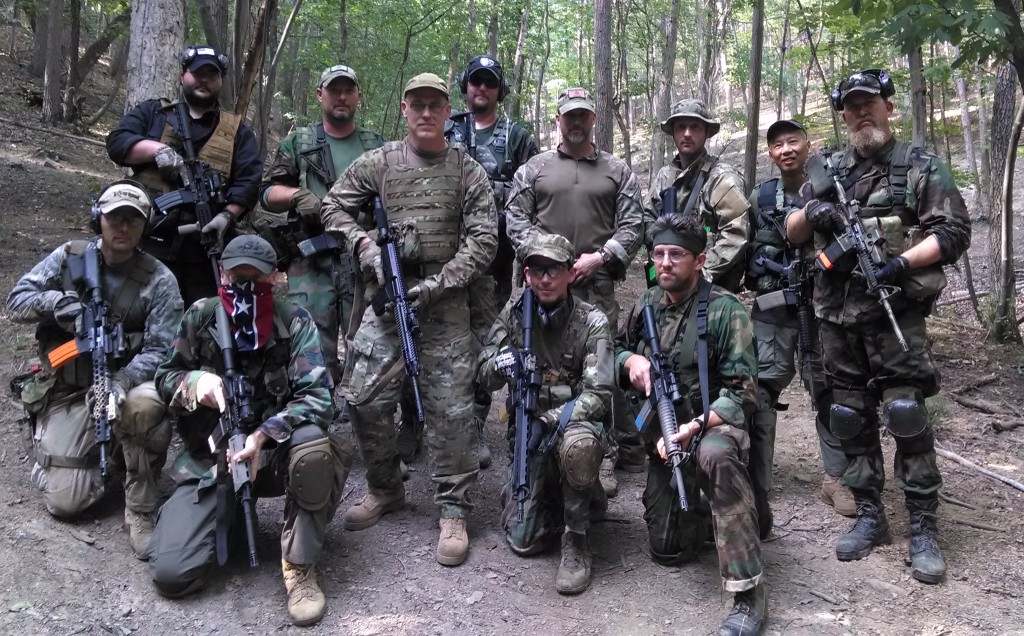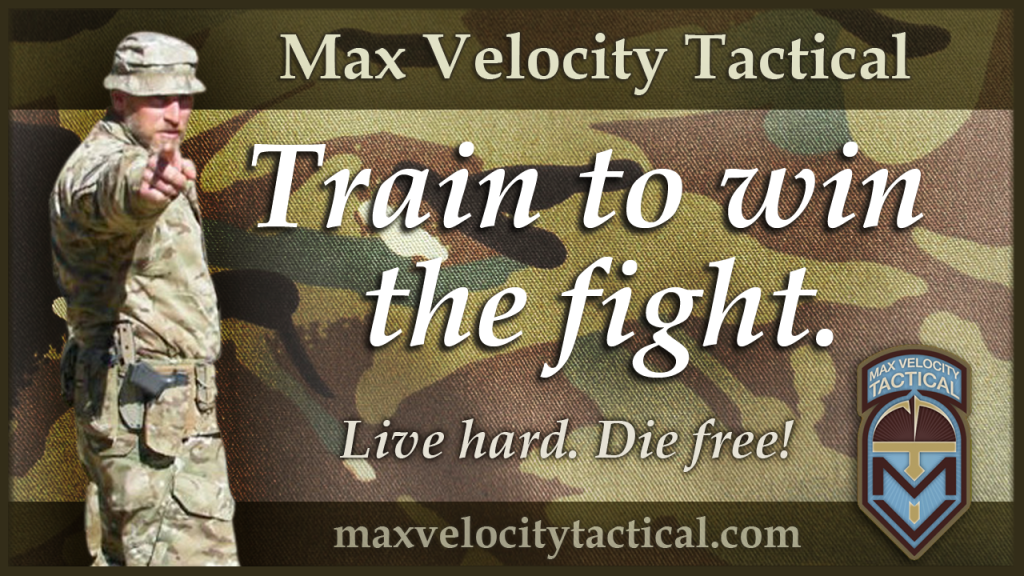Student Review: Rifle Skills / Combat Team Tactics August: Ragnar
MVT CLASS REVIEW RS AND CTT 6-9 AUG 2015
BY Ragnar
This is the fourth class pertaining to tactical use of firearms I have taken in the past few years, and the eighth or ninth related to firearms and shooting. All of them have provided me with positives and negatives. Some I actually learned something; all asked that I consider submitting a review. This is the first one that I thought I should write a review for, knowing that it would most likely benefit myself the most. I believe skill with a rifle is one of the most basic responsibilities of an American (even if some think we are actually still Brits). I learned at this class that I wasn’t nearly as proficient as I thought I was, and it wasn’t a very optimistic opinion to begin with. I am glad that there are competent people out there willing to conduct this training for citizens.
I first heard of MVT from reading a few of Max’s books some time ago, I booked a class back in the spring after seeing a few blog posts I read on other websites. At the time I paid my deposit I also bought into one of the training plans (Training Peaks) in order to be in better physical condition to get the most out of the class.
The first two days were square range instruction (Rifle Skills and Combat Rifle); each day started with a detailed safety briefing that was partly training as well. All days of this briefing was very thorough and complete, without it just being the same “four rules and don’t shoot anyone” lecture I have become used to at other training I have attended. Both days continuously added small increments to the skills being practiced in preparation for more advanced things on the tactical ranges. The difference with MVT and other classes I attended began to show very quickly. My biggest issue with other classes I have had was the lack of a logical explanation of why certain things were done. Detailed explanations and demonstrations usually filled this need. When something out the ordinary arose, the explanation at this class always was explained in the same terms. Sometimes that explanation came in the form of a loud voice when you screwed up a simple drill, but it was still much better than what I have seen at other courses. There was no “that’s just the way it is” type of explanations. I have seen arguments between students and instructors at other classes on the firing line when the way being taught didn’t work for something unusual.
I experienced several problems with my rifle both days on the square range that ended up being attributed to poor maintenance on my part (I was the guy with the grease). I found it hard to believe, as the rifle I brought had been through similar use and weather (I rained for a while on Friday), but this was the first time in about 2.5k rounds that it failed. Have spares, proper lube, and cleaning equipment. I did have that, so luckily my rifle was never out for too long, but it cost me some training time, as well as taking attention of instructors away from the class. I don’t like being that guy; luckily I learned it early enough in the weekend to prevent it being an issue once we went down to the school house. After that, the only other problems I had were some GI mags that weren’t up to it, and a popped primer that jammed up my lower for a few minutes.
After the first few days, I felt good about how I was progressing, but I knew the following two days would be much different.
Saturday began at the tactical ranges with a safety briefing, and thorough explanation of what the basics of fire and movement entailed. Most of the drills this day and Sunday were preceded by a brief rehearsal by all members of the class, which helped a great deal. The lessons of the previous two days were put in to context verbally and with visual aids. The basic ideas of “head-body-weapon”, buddy position awareness, and other simple but important concepts drilled at the square range were added to the instruction. At the end of each team run on a drill Max and or 1st Sgt gave a brief critique of how you did. This wasn’t always good news, but gave you the information you needed to fix mistakes and learn the skills they were trying to teach. Usually, you knew what you were doing wrong, but the end of drill brief was one of the most valuable parts of the class for me.
The day started with two man buddy teams firing and moving on individual targets, breaking contact drills, and then moved to larger four man teams. The real stress of this class, for me, was the mental task of remembering all of the things I was supposed to do as part of a team, not just a single man with a rifle. Hitting the targets was by far the easiest part. Remembering the how, why and when of moving and communicating was far more mentally stressful, and the mental stress was far more of a distraction for me then the physical parts. Each added layer of training increased this load in the mind, and you had to pay attention at all times to your teammates locations in order to properly do your job in the team. This was all very new to me, and it was hard to get up to speed without making mistakes. Other classes I had done in the past that included movement were no preparation for this at all. Saturday ended with an introduction to peeling and discussion of the next day’s class. My rifle ran great most of the day except for a magazine related issue early in the day. By the end of Saturday, I was tired, but not exhausted. The next morning I was a little sore, but I think the training plan I used went a long way to preventing that from being worse.
Sunday began with the safety brief, and the first tactical drill was the individual “jungle walk”, which I pretty well screwed up. Each segment I created a problem for myself that showed areas of weakness in my manipulation skills, including a double feed that took me way too long to clear, the end brief by Max reinforced what I had to work on to improve. During that time we had a lecture from Fred about CBRN topics that was as depressing as it was informative. It was very good information, and laid to rest some questions I had about that subject. The realization of some of the scenarios he presented was not encouraging.
The rest of the day was various team drills, mostly breaking contact and peeling. Again, all the important but simple tasks all had to be employed in order to complete these maneuvers efficiently. The most obvious evidence of when you were spending more time shooting than moving and/or communicating was how empty you mag pouches were at the end of a drill compared to other teams that did it better. The day ended with the squad assault against a series of bunkers which combined many of the things we had been doing all weekend into one final exercise which included the same process as all the previous drills of the weekend, a briefing, rehearsal, then live. The addition of the instructors acting as squad leaders helped immensely for understanding what each fire teams role and responsibility was, and made it much easier to concentrate on what each buddy team had to do. The AAR at the end of the day helped answer those last few questions and helped tie much together. To me it ultimately proved that this was just the beginning of building the proper skills to employ a rifle in combat.
Overall I was very pleased with the class, it was mentally and physically demanding, but not in any way that would or should discourage anyone in average physical condition. The training plan helped me a lot, but that is what I do best with. Anyone with a moderate level of physical level activity can do this. It was very helpful to get real advice about many topics related to this from people who actually have real world experience. As we all know, it is very easy to find bad ideas masquerading as informed opinion on the internet, and sifting the good from the bad isn’t always easy.
The two biggest questions that I have in my mind since the class were as follows. 1. I could use a better understanding of use of cover. I know it was explained many times, but it still is uncertain in my mind. I assume that more training and experience will help that. 2. In some of the drills with more than one buddy pair, it seemed like part of the problem about how slow we (I) did things was no one knew (at least I didn’t know) who was supposed to be the guy to say where we needed to move to next. This was mostly apparent to me on the “contact left peel” that was to end up as a contact front as we got far enough back.
I plan on returning for more classes, and hope to bring others with me in the future.


